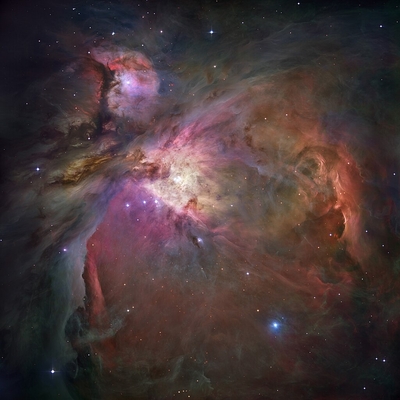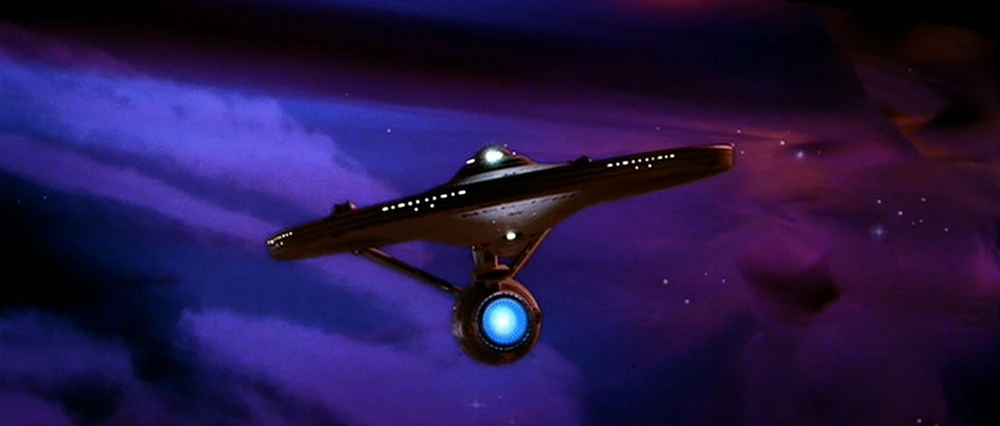What are nebulae?
Nebula is Latin for cloud, and so the simplest way to describe a nebula is a giant expanse of dust and gas in space that looks very much like a giant cloud. Different types of nebulae are categorised by their composition and formation.
Planetary Nebula
When a medium-sized star (much the same size as our Sun) dies, its upper atmosphere or corona expands outward and drifts away from the white dwarf remnant that is left behind. This is called a planetary nebula, although it has nothing to do with forming planets, at least not at this early stage. This will ultimately be the fate of our Sun and Solar System. The Ring Nebula in the constellation of Lyra, the harp, is one of the best examples of a planetary nebula and an emission nebula. Most planetary nebula are also emission nebulae, as the white dwarf remnant will heat and ionise the gases left behind after it dies.
Emission Nebula
When the gas within a nebula becomes ionised from the light and energy of massive nearby stars, they will often glow and emit a range of coloured light. This is called an Emission Nebula. The different colours are determined by the composition of the gas and how hot it is. So, for example, a hot hydrogen-rich nebula is likely to be purple, and a colder section of ionised Oxygen will be green or blue. The most famous emission nebula is M42 or the Orion Nebula.
Reflection Nebula
Dust doesn’t emit light, but it can reflect it depending on how reflective it is. Most of the dust in the nebula is a form of extremely fine soot, so it is not very reflective. However, silica and other highly reflective particles will also be included within the cloud. When these particles receive light from nearby stars, the light can be reflected and captured by Earth observers. These are called Reflection Nebula. A good example of a reflection nebula would be IC 2118 or the Witch Head nebula, which reflects the light of Rigel in the Orion Constellation.
The Orion Nebula
 The most famous emission nebula of all, and the only one that is easy to see with the naked eye under dark skies, is M42 – the Orion Nebula. Forming the middle star of the sword of Orion that hangs off his famous belt, the Orion Nebula is a small, highly ionised and visible piece of a much larger, massive gas and dust region called the Orion Molecular Cloud Complex. This region includes other famous celestial objects like the Horsehead Nebula, Barnards Loop and the Flame Nebula and stretches across the entire constellation of Orion. The Orion nebula is easily visible because it hosts thousands of stars, including the very bright Trapezium open cluster, a cluster of five very bright, hot young stars formed from the nebula itself.
The most famous emission nebula of all, and the only one that is easy to see with the naked eye under dark skies, is M42 – the Orion Nebula. Forming the middle star of the sword of Orion that hangs off his famous belt, the Orion Nebula is a small, highly ionised and visible piece of a much larger, massive gas and dust region called the Orion Molecular Cloud Complex. This region includes other famous celestial objects like the Horsehead Nebula, Barnards Loop and the Flame Nebula and stretches across the entire constellation of Orion. The Orion nebula is easily visible because it hosts thousands of stars, including the very bright Trapezium open cluster, a cluster of five very bright, hot young stars formed from the nebula itself.When Hubble launched in 1990, one of the first objects scientists wanted an image of was the Orion nebula, and Hubble didn’t disappoint. But it was Hubble’s composite image taken in 2006 of the entire nebulae, seen here, which showed off the beauty of M42. The colouration of the nebula shows high levels of relatively cool Hydrogen (indicated by the dark red tones) around the edge, with hotter areas of purple in the centre. There is also a distinct green colouration at the very extreme edges, and this is thought to be due to the ionisation of Oxygen.
In 2001, Hubble identified several phenomena called Protoplanetary Discs within the Orion Nebula. Proof that stars and solar systems are still forming today (well, at least they were 1,344 years ago, as that’s how many light years away the nebula is from Earth.) Depending upon its size and temperature, each new star will help to ionise and light the nebula from the inside for millennia to come. It is, therefore, reasonable to hypothesise that almost all nebulae, when the levels of hydrogen are great enough, represent areas of new star formation and are, therefore, responsible for all the new star formation in every galaxy in the universe.
Famous Nebulae in films
It is a diffuse emission nebula in the Mutara Sector of the Beta Quadrant, close to Regula 1, an uninhabited D-Class planetoid in the Mutara Sector. We can see from the available information that it is large - at least a sector across. The predominant colours of red and blue suggests it contains high levels of both Hydrogen and Oxygen which is highly ionised. There is no explanation for why the nebula is as ionised as it is. There are no giant stars, pulsar, or other phenomena to provide the energy it exhibits. Still, it suffers from irregular bouts of random electrical arcing, and the electromagnetic pulses created are strong enough to render ship sensors and shields useless. Whilst we haven’t witnessed such arcing within nebulae, there is no reason why nebula couldn’t exhibit this behaviour if they are ionised enough. We already know electricity can arc, even in a perfect vacuum – which a nebula is not.
The final climatic battle of the film takes place inside the Mutara Nebula, as the two legendary ship captains take turns trying to one-up the other. Eventually, Admiral Kirk is victorious, and in the dying seconds of the film, the nebula is consumed by the Genesis Device to help create a new world, the Genesis Planet.

 During the Star Trek Voyager episode: The Cloud, Captain Janeway and crew are relentlessly scouring the Delta Quadrant looking for energy sources to supplement Voyagers reserves. Neelix has taken to preparing food to help ration available energy, and Captain Janeway is finding life without coffee almost too much. The ship detects a nebula within range with a high concentration of Omicron particles, which could be used to help replenish the ships energy. It turns out that the nebula isn't a nebula at all, but rather an advanced organic entity which they unintentionally harm whilst trying to reach the particles. After deciding to help heal the wounds they have caused, the crew use the entity's own energy based circulation system to reach the wound and assist in the healing process.
During the Star Trek Voyager episode: The Cloud, Captain Janeway and crew are relentlessly scouring the Delta Quadrant looking for energy sources to supplement Voyagers reserves. Neelix has taken to preparing food to help ration available energy, and Captain Janeway is finding life without coffee almost too much. The ship detects a nebula within range with a high concentration of Omicron particles, which could be used to help replenish the ships energy. It turns out that the nebula isn't a nebula at all, but rather an advanced organic entity which they unintentionally harm whilst trying to reach the particles. After deciding to help heal the wounds they have caused, the crew use the entity's own energy based circulation system to reach the wound and assist in the healing process.Whilst there is no evidence yet of life within Nebulae, or indeed of any organism that could be mistaken as a nebula, it is the case that all the building blocks of life can be found inside them. Indeed, every molecule of carbon inside you now, whilst reading this, would have started off within the gases and atoms created by a dying star or Super Nova, which in turn would have gone on to form the nebula that ultimately created our Sun 4.5 billion years ago. So, however you look at it, we are all born from within a Nebula.
The Moon
Here are the Moon’s phases during December, along with the dates.
• Last Quarter – 4th January 2024
• New Moon – 11th January 2024
• First Quarter – 18th January 2024
• Full Moon – 25th January 2024

January’s full moon is often called the Wolf Moon. The Gaelic word for January, Faoilleach, comes from faol-chù, or of the wolf. The Saxon word for January is Wulf-month or Wolf Month. This close association is likely because January represents the start of the wolf's breeding cycle. If wolves still lived in Scotland, Ireland, or England, you would likely hear them howling a lot more during this cold winter month. Thanks to MoonGiant for this information. (more here)
Mercury
Mercury became visible in the morning sky toward the end of December 2023. The planet’s greatest elongation (or distance) from sunrise will be January 12, 2024. And Mercury will remain bright after that. So, you will need to get up early for this one.
Venus
Venus is still a morning planet but is in retrograde and moving ever westwards. It is still very visible about an hour before sunrise in the Eastern Sky, and on the 8/9th January, you should be able to get a good glimpse of her next to the thin crescent moon, with Mercury close by.
Mars
Mars is about to make a comeback, having been invisible behind the Sun for most of the latter part of 2023. Still not in a great viewing location, it will pop back in to view near Mercury in the morning skies of January 27th, but you are still best to wait until later in the year to get a proper look at the red planet.
Jupiter
Jupiter is still bright in the evening sky but is starting to edge into more toward twilight skies by the end of the month. Jupiter is continuing its progression through the constellation of Aries. If you have a small telescope, you should be able to make out the bands of gas in the planet’s upper atmosphere and the four largest moons. On January 6th, you could also capture a transit of both Ganymede and Europa across the face of Jupiter - look for their shadows on the planet’s disc.
Saturn
Saturn can be found in the southwestern sky an hour after sunset. It is currently in the constellation of Aquarius. A great opportunity to find Saturn easily is on 14th January, when the crescent moon will be just to the left of Saturn.
Uranus
Uranus is in the constellation of Aries, halfway between Jupiter and the Pleiades. You will likely need binoculars; I have never been able to see the planet without optical aid.
Neptune
Setting soon after 8 p.m. local time by the end of the month. It’s located in Pisces the Fish, just south of the Circlet. As always, bring a good telescope to see much of anything at all.
Next Month’s Preview
Next month, I will look at comets, how they are found, what to expect visually, and what the comet forecast for 2024 looks like.
What did you think of this edition of UFP Stellar Cartography? Let us know in the comments below.
WRITTEN BY WoorLord
EDITED BY WoorLord
IMAGES SOURCED FROM Hubble Site - Wiki Fed - MoonGiant.com - TOR.com


 (even if dark skies are better, of course)
(even if dark skies are better, of course)

